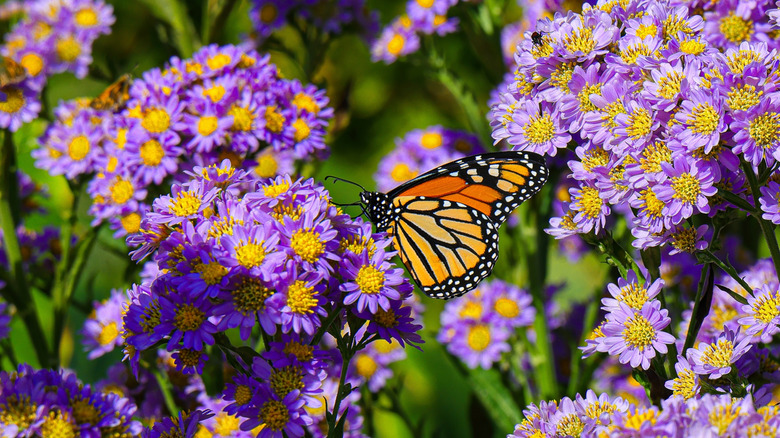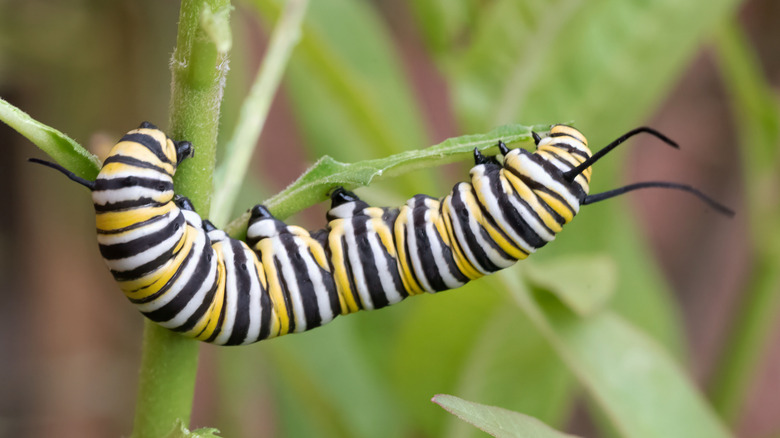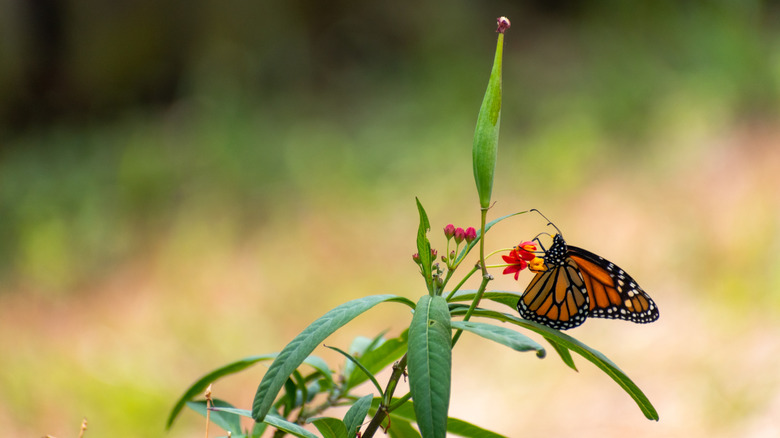How To Transform A Garden Patch Into A Monarch Butterfly Haven On A Budget
If you've always wanted to curate your own monarch butterfly garden but have been unsure of where to start or how to snag supplies without breaking the bank, we've got some good news for you. You don't need to spend hundreds of dollars in order to maintain your very own monarch haven; in fact, it can be a very simple and affordable process. Monarch butterflies primarily rely on milkweed for nutrition and nesting sites, and this plant is easy to locate. Depending on where you live, there are multiple resources for cheap, if not free, milkweed, including organizations like Live Monarch and Monarch Watch. Soon, you can have dozens of monarchs flying around your lawn, showing off their vibrant colors and pollinating your garden to their hearts' content.
Found all across North America, monarchs are one of the most beloved types of butterflies in the States. You can quickly recognize them by their iconic orange and black wing patterns, with the males having distinctive black spots. Not only are they beautiful to look at, but they are immensely beneficial to any garden, pollinating flowers and playing an important role in the food chain. Creating your own butterfly garden is inexpensive and can help monarchs thrive, which is especially important as populations of these beautiful insects continue to decrease due to a lack of habitat.
What do monarchs need to thrive?
There are a few necessary items you'll need to add to your garden in order to attract these butterflies. First, you'll want to ensure your space contains their favorite things to eat. From their caterpillar stage to their adult stage, the monarch butterfly's diet varies. As caterpillars, monarchs only feed on milkweed, also known as their "host plant", typically either the swamp (Asclepias incarnata) or common variety (Asclepias syriaca). This perennial plant secretes a sweet, milky substance that, while typically toxic to other animals, is a monarch diet staple. Female monarchs also lay their eggs on milkweed leaves, so adding this plant to your garden plays a dual role.
Once the monarchs reach adulthood, they will still feed on milkweed, but also enjoy nectar-filled blooms. This means you need to add a plethora of native nectar-rich flowers to your garden in order to give these creatures the nutrition they need to pollinate and reproduce. When planning your garden layout, it's recommended to aim for around 70% native plants, with milkweed planted in small groups. Ideally, you'll want to plant nectar-filled flowers that bloom throughout the year, giving the monarchs multiple options for feeding.
How to find affordable milkweed for your monarch garden
There are many organizations that offer cheap or free milkweed seeds to their local communities as they work to boost the population of monarch butterflies. Though there are several types of milkweed, it's important to ensure the milkweed you purchase is native to where you live. If you want to find a local milkweed vendor, you can use online tools like the Xerces Society for Invertebrate Conservation's Milkweed Finder or Monarch Joint Venture's Vendor Map, both of which can help narrow down your closest options. Since milkweed isn't available in all parts of the U.S., you may need to do some digging to find your best source. While you can purchase seeds online, it's recommended to explore local options first.
Organizations like Live Monarch and Monarch Watch often distribute free milkweed seeds to interested parties, pushing the regrowth of monarch butterfly habitats around the country. While Live Monarch tends to work with full habitat restoration and has an acreage requirement, Monarch Watch is more flexible with individual gardens and has applications for free seeds. Once you have your milkweed seeds and a sunny spot in your garden, you are ready to get started with your personal (and affordable) monarch haven.


